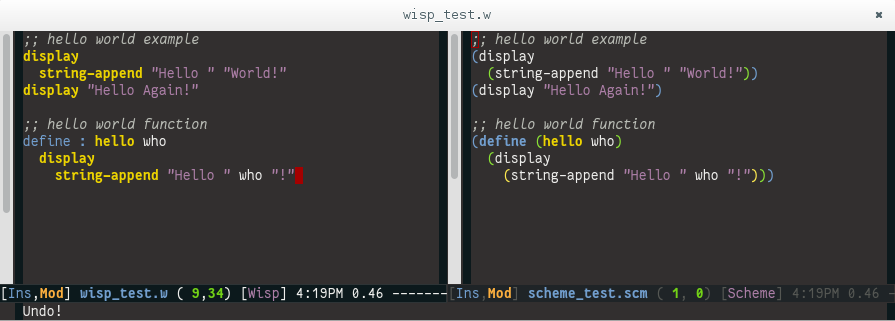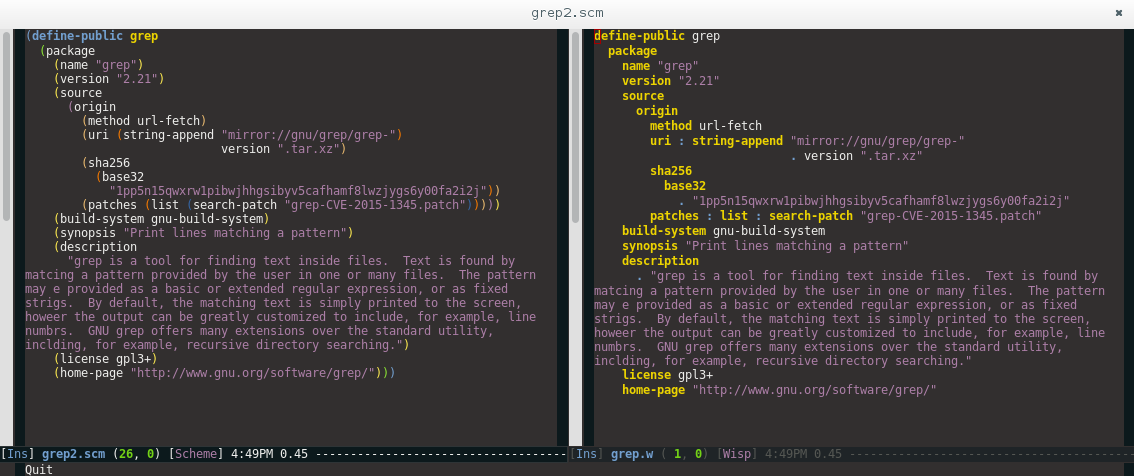Hello all!
So a while ago we started talking about this
userops thing.
Basically, the idea is "deployment for the people", focusing on user
computing / networking freedom (in contrast to "devops", benefits to
large institutions are sure to come as a side effect, but are not the
primary focus. There's kind of a loose community surrounding the term
now, and a number of us are working towards solutions. But I think
something that has been missing for me at least is something to test
against. Everyone in the group wants to make deployment easiser. But
what does that mean?
This is an attempt to sketch out requirements. Keep in mind that I'm
writing out this draft on my own, so it might be that I'm missing some
things. And of course, some of this can be interpreted in multiple
ways. But it seems to me that if we want to make running servers
something for mere mortals to do for themselves, their friends, and
their families, these are some of the things that are needed:
-
Free as in Freedom:
I think this one's a given. If your solution isn't free and
open source software, there's no way it can deliver proper
network freedoms. I feel like this goes without saying, but
it's not considered a requirement in the "devops" world... but
the focus is different there. We're aiming to liberate users,
so your software solution should of course itself start with a
foundation of freedom.
Reproducible:
It's important to users that they be able to have the same
system produced over and over again. This is important for
experimenting with a setup before deployment, for ensuring that
issues are reproducible and friends and communities helping each
other debug problems when they run into them. It's also
important for security; you should be able to be sure that the
system you have described is the system you are really running,
and that if someone has compromised your system, that you are
able to rebuild it. And you shouldn't be relying on someone to
build a binary version of your system for you, unless there's a
way to rebuild that binary version yourself and you have a way
to be sure that this binary version corresponds to the system's
description and source. (Use the source, Luke!)
Nonetheless, I've noticed that when people talk about
reproducibility, they sometimes are talking about two distinct
but highly related things.
-
Reproducible packages:
The ability to compile from source any given package in a
distribution, and to have clear methods and procedures to do
so. While has been a given in the free software world for a
long time, there's been a trend in the devops-type world
towards a determination that packaging and deployment in
modern languages has gotten too complex, so simply rely on
some binary deployment. For reasons described above and
more, you should be able to rebuild your packages... *and*
all of your packages' dependencies... and their dependencies
too. If you can't do this, it's not really reproducible.
An even better goal is to guarantee not only that packages
can be built, but that they are byte-for-byte identical to
each other when built upon all their previous dependencies
on the same architecture. The
Debian Reproducibility
Project is a clear example of this principle in action.
Reproducible systems:
Take the package reproducibility description above, and
apply it to a whole system. It should be possible to, one
way or another, either describe or keep record of (or even
better, both) the system that is to be built, and rebuild it
again. Given selected packages, configuration files, and
anything else that is not "user data" (which is addressed in
the next section), it should be possible to have the very
same system that existed previously.
As with many things on this list, this is somewhat of a
gradient. But one extrapoliation, if taken far enough, I
believe is a useful one (and ties in with the "recoverable
sytem" part): systems should not be necessarily dependent
upon the date and time they are deployed. That is to say,
if I deployed a system yesterday, I should be able to
redeploy that same system today on an entirely new system
using all the packages that were installed yesterday, even
if my distribution now has newer, updated packages. It
should be possible for a system to be reproducible towards
any state, no matter what fixed point in time we were
originally referring to.
Recoverable:
Few things are more stressful than having a computer that works,
is doing something important for you, and then something
happens... and suddenly it doesn't, and you can't get back to
the point where your computer was working anymore. Maybe you
even lost important data!
If something goes wrong, it should be possible to set things
right again. A good userops system should do this. There are
two domains to which this applies:
-
Recoverable data:
In other words, backups. Anything that's special, mutable
data that the user wants to keep fits in this territory. As
much as possible, a userops system should seek to make
running backups easy. Identifying based on system
configuration which files to copy and helping to provide
this information to a backup system, or simply only leaving
all mutable user data in an easy-to-back-up location would
help users from having to determine what to back up on their
own, which can be easily overwhelming and error-prone for an
individual.
Some data (such as data in many SQL databases) is a bit more
complex than just copying over files. For something like
this, it would be best if a system could help with setting
up this data to be moved to a more appropriate backup
serialization.
Recoverable system:
Linking somewhat to the "reproducible system" concept, a
user should be able to upgrade without fear of becoming
stuck. Upgrade paralysis is something I know I and many
others have experienced. Sometimes it even appears that an
upgrade will go totally fine, and you may have tested
carefully to make sure it will, but you do an upgrade, and
suddenly things are broken. The state of the system has
moved to a point where you can't get back! This is a
problem.
If a user experiences a problem in upgrading their system
software and configuration, they should have a good means of
rolling back. I believe this will remove much of the
anxiety out of server administration especially for smaller
scale deployments... I know it would for me.
Friendly GUI
It should be possible to install the system via a friendly GUI.
This probably should be optional; there may be lower level
interfaces to the deployment system that some users would prefer
to use. But many things probably can be done from a GUI, and
thus should be able to be.
Many aspects of configuring a system require filling in shared
data between components; a system should generally follow a
Don't Repeat Yourself type philosophy. A web application may
require the configuration details of a mail transfer agent, and
the web application may also need to provide its own details to
a web server such as Nginx or Apache. Users should have to fill
in these details in one place each, and they should propagate
configuration to the other components of the system.
Scriptable
Not everyone should have to work with this layer directly, but
everyone benefits from scriptability. Having your system be
scriptable means that users can properly build interfaces on top
of your system and additional components that extend it beyond
directions you may be able to do directly. For example, you
might not have to build a web interface yourself; if your system
exposes its internals in a language capable enough of building
web applications, someone else can do that for you. Similarly
with provisioning, etc.
Working with the previous section, bonus points if the GUI can
"guide users" into learning how to work with more lower level
components; the Blender UI is a good example of this, with most
users being artists who are not programmers, but hovering over
user interface elements exposes their Python equivalents, and so
many artists do not start out as developers, but become so in
working to extend the program for their needs bit by bit.
(Emacs has similar behavior, but is already built for
developers, so is not as good of an example.)
"Self Extensibility"
is another way to look at this.
Collaboration friendly:
Though many individuals will be deploying on their own, many
server deployments are set up to serve a community. It should
be possible for users to help each other collaborate on
deployment. This may mean a variety of things, from being able
to collaborate on configuration, to having an easy means to
reproduce a system locally.
Additionally, many deployments share steps. Users should be
able to help each other out and share "recipes" of deployment
steps. The most minimalist (and least useful) version of this
is something akin to snippet sharing on a wiki. Most likely,
wikis already exist, so more interestingly, it should be
possible to share deployment strategies via code that is
proceduralized in some form. As such, in an ideal form,
deployment recipes should be made available similar to how
packages are in present distributions, with the appropriate
slots left open for customization for a particular deployment.
Fleet manageable:
Many users have not one but many computers to take care of these
days. Keeping so many systems up to date can be very hard;
being able to do so for many systems at once (especially if your
system allows them to share configuration components) can help
a user actually keep on track of things and lead to less
neglected systems.
There may be different sets, or "fleets", of computers to take
care of... you may find that a user discovers that she needs to
both take care of a set of computers for her (and maybe her
loved ones') personal use, but she also has servers to take care
of for a hobby project, and another set of servers for work.
Not all users require this, and perhaps this can be provided on
another layer via some other scripting. But enough users are in
"maintainance overload" of keeping track of too many computers
that this should probably be provided.
Secure
One of the most important and yet open ended requirements,
proper security is critical. Security decisions usually involve
tradeoffs, so what security decisions are made is left somewhat
open ended, but there should be a focus of security within your
system. Most importantly, good security hygeine should be made
easy for your users, ideally as easy or easier than not
following good hygeiene.
Particular areas of interest include: encrypted communication,
preferring or enforcing key based authentication over passwords,
isolating and sandboxing applications.
To my knowledge, at this time no system provides all the features
above in a way that is usable for many everyday users. (I've also
left some ambiguity in how to achieve these properties above,
so in a sense, this is not a pass/fail type test, but rather a set
of properties to measure a system against.) In an ideal future,
more Userops type systems will provide the above properties, and
ideally not all users will have to think too much about their
benefits. (Though it's always great to give the opportunity to
users who are interested in thinking about these things!) In the
meanwhile, I hope this document will provide a useful basis for
implementing and thinking about mapping one's implementation
against!







